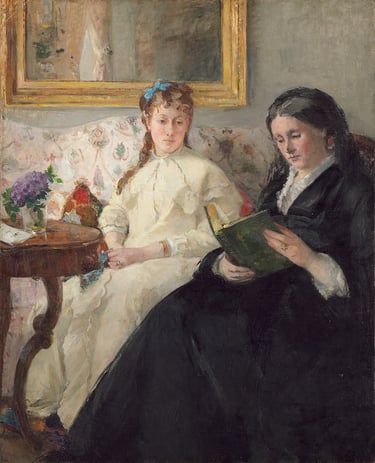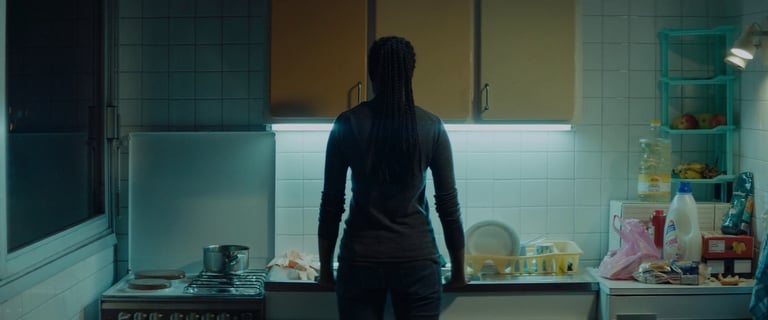Lesson 1: Visual Language
A lesson in visual literacy that trains students to observe and interpret images emotionally and narratively before creating them, culminating in the “Story Within a Frame” exercise that reveals how cinematography begins with story, not the camera.
My post content
Analyze the images below with the class. The goal is to identify the purpose first, what did the creator mean to communicate? Only after this question is answered can students proceed to identify creative choices that are effective to communicate the image’s meaning. From left to right: The Reading, by Berthe Morisot, Girlhood, directed by Céline Sciamma and Miles Davis by Irving Penn.






The following are one line "stories" for students to visualize in an image. The way these stories are worded is not random. Narrative mode is used to trigger a discussion about how these differences can be visualized ("I see" vs. "she is running"). Most stories indicate a mental state which needs to be communicated, rather than only focusing on an action. These are points which should be discussed when reviewing the completed images.
Peeking into the room I see something unexpected.
I think someone is following me. What do they want??
Even in a crowded place I feel alone.
This room is closing on me. I need to get out!
This is the happiest day in my life!
I can’t believe what I’m seeing! I better not get caught.
Hey you! Yeah, I’m talking to you!
He / she is running as fast as he / she can.
I’m going to hide here. No one will find me.
I will take this step. I am strong. I can do this.
I don’t think I’m strong enough to do this.
I have to warn them before it’s too late!
It was a difficult journey, but he / she made it.
If he / she only knew how I feel.
I can’t let anyone know about this.
At last, everything is quiet now.
He / She just received good news!
I’m trying to hide how bad this food tastes.
They can’t know I’m home.
I think he / she is watching me?
He / She just heard a noise in the house.
I can’t wait for tomorrow!
Use the following scenes to demonstrate the ideas discussed, this time with moving images (press the pop-out link at the upper right corner to download the clip). In the scene from Once Upon a Time in Hollywood, Leonardo DiCaprio's character feels insecure and does not agree with the compliments given to him. This is reinforced by the fact his shots are always closer to his face than the other actor's, nudging the audience to examine his mental state rather than his actions.
In this scene from The Lives of Others, the students are challenged with multiple questions: who is the main character? What is their story? What is an important turning point? The discussion reveals many possible answers. The instructor can point to the fact that the protagonist, Captain Gerd Weisler, is presented as an idealist and professional interrogator and teacher. However, when his friend informs him that he is promoted, the camea racks focus to a subtle reaction. This is the moment when we know he is aware of a problem, which will later trigger the plot.
This short scene from the film Girlhood can reaffirm the class interpretation to the still imgage used.
It's important to show that the techniques discussed are relevant to non-narrative works as well. In this scene from the documentary series Wild Wild Country, Ma Anand Sheela is introduced. There are quite a few visual decisions made in the introduction of her character to build her as a monumental character, and a class discussion can reveal them.